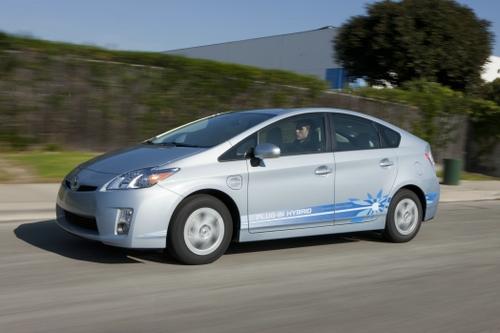
The latest news from the world of electric cars can’t be good for EV battery makers. First, there was Toyota Motor Corp.’s recent announcement that it will cut its sales targets for the all-electric eQ city car in the coming year. In truth, Toyota’s planned sales numbers for the eQ had already been miniscule, but the remarks that accompanied the announcement were the real problem. According to an article from Reuters.com, the giant automaker admitted it had misread the ability of battery technology to meet consumer demands.
“The current capabilities of electric vehicles do not meet society’s needs, whether it may be the distance the cars can run, or the costs, or how it takes a long time to charge,” said Takeshi Uchiyamada, Toyota’s vice chairman, in the Reuters story. Then there was the September report from the non-partisan Congressional Budget Office (CBO), which questioned the value of tax credits for electric vehicles. The report, titled “Effects of Federal Tax Credits for the Purchase of Electric Vehicles,” took special aim at pure electric cars with big batteries.
“Assuming that everything else is equal, the larger an electric vehicle’s battery capacity, the greater its cost disadvantage relative to conventional vehicles — and the larger the tax credit needed to make it cost competitive,” the report stated. “Conversely, electric vehicles with small batteries are more cost-competitive.” Finally, there were the recent stories about the Nissan Leaf and Tesla Model S. Articles from greecarreports.com chronicled an ongoing battle between Nissan and some owners of its Leaf electric cars, as a result of those owners complaining that their batteries were suffering from premature range loss in hot climates.
Meanwhile, a story in The Wall Street Journal suggested that Tesla Motors Inc., which makes electric cars with giant lithium-ion battery packs, warned investors that it is cutting its revenue targets for 2012 because it has fallen behind its production goals for the Model S electric car. Some of this could be written off to the media’s over-zealous, microscopic examination of the electric car business, of course. But not all. You can’t blame the media when the sales figures of electric cars are so disturbingly low. The Leaf is a case in point: Nissan sold only 395 Leafs in June, followed by 685 in July, according to greencarreports.com.
“Back in 2008, a lot of people thought higher (sales) numbers were achievable within 10 years,” Michael Holman, a research director at Lux Research, told Design News. “But that’s an area where people have come around to more realistic views. They’re realizing that it might take a longer time, coupled with some fundamental scientific breakthroughs, before the battery costs get down to the level that’s needed.”
To be sure, the forecast isn’t grim for all electrified vehicles. Plug-in hybrids, particularly those with smaller batteries, seem to have a better near-term outlook. By 2020, Lux Research predicts the auto industry will hit annual sales of 600,000 “light” plug-in hybrids (like the Prius PHV) and 150,000 “heavy” plug-ins (like the Volt). In contrast, Lux says sales of pure electrics will reach just 60,000 per year by 2020.
It’s worth repeating that battery size plays a big role in those numbers. The Prius PHV, for example, employs a 4.4kWh lithium-ion battery (hence the higher sales forecast), while the Volt uses a 16kWh pack, the Leaf employs a 24kWh unit, and the Tesla Model S can reach as high as 85kWh. The bottom line is that the vehicles with massive battery packs generally have lower sales expectations.
None of this should be a surprise, of course. Bigger battery packs cost a lot more. And despite the ever-present hype around electric cars, consumers will usually reach for the more cost-effective solution first. “The economics of battery-electric cars don’t make a lot of sense right now,” Holman told us. “With hybrids — even micro-hybrids — you can get similar benefits in terms of reduced gasoline cost for a lot less money.”




